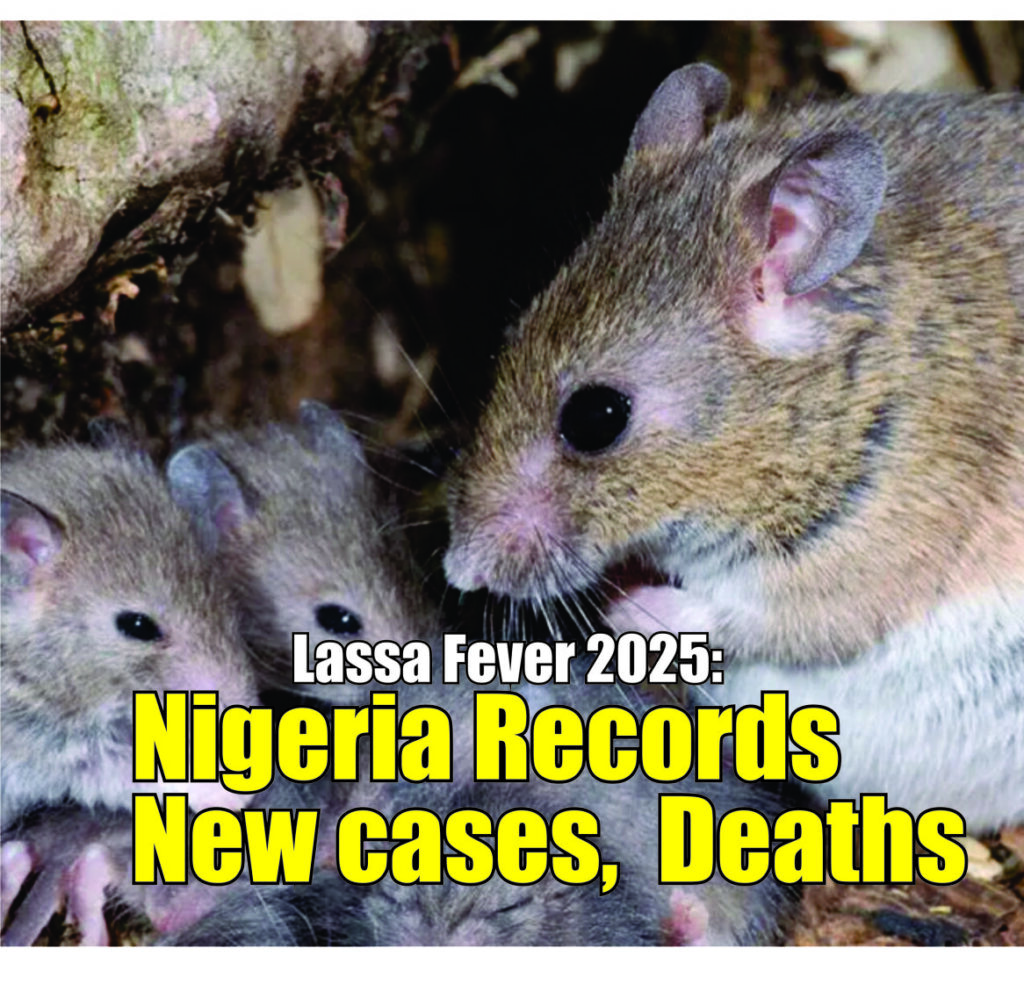
According to a report published by Premium Times and recently obtained by BoldNEWS Africa, six states in Nigeria have recorded at least one confirmed case of Lassa fever across 20 local government areas (LGAs) in 2025. The Nigeria Centre for Disease Control and Prevention (NCDC) confirmed 54 new cases of the disease and 10 deaths within a single week, spanning December 30, 2024, to January 5, 2025.

The NCDC disclosed these figures in its latest situation report for week one of 2025, published on its official website. The report revealed a decline in the number of confirmed cases from 70 in the last week of 2024 to 54 in the first week of 2025. However, it noted an increase in suspected cases compared to the same period in 2024.
Cumulatively, the data indicates that Nigeria recorded 10 deaths within the reporting period, with a case fatality rate (CFR) of 18.5 percent, significantly higher than the 11.3 percent CFR recorded during the same period in 2024. The report highlighted that six states—Ondo, Bauchi, Edo, Taraba, Ebonyi, and Kogi—had reported at least one confirmed case across 20 LGAs.
Of all confirmed cases, 78 percent were concentrated in three states: Ondo, Edo, and Bauchi. Ondo State accounted for 35 percent of the confirmed cases, followed by Edo with 28 percent, and Bauchi with 15 percent. Notably, no health workers were infected during the reporting week, and the disease predominantly affected individuals between the ages of 20 and 31.
In 2024, Nigeria experienced a significant outbreak of Lassa fever, recording 9,685 suspected cases, 1,187 confirmed cases, and 191 deaths across 28 states and 138 LGAs. This surge is consistent with the typical peak season for Lassa fever, which occurs during the dry season, from December to April.
The NCDC outlined several challenges hindering the fight against Lassa fever. These include late presentation of cases, which contributes to the increased CFR, and poor health-seeking behavior, often attributed to the high cost of treatment and clinical management. Other challenges cited were poor environmental sanitation in high-burden communities and limited awareness about the disease.
Lassa fever is an acute viral hemorrhagic illness transmitted to humans through contact with food or household items contaminated by infected rodents or via direct contact with infected individuals. Symptoms include fever, headache, sore throat, general body weakness, cough, nausea, vomiting, diarrhea, muscle pains, chest pain, and, in severe cases, unexplained bleeding from the ears, eyes, nose, mouth, or other body openings.
Efforts to combat the disease are ongoing, with the NCDC emphasizing the importance of early detection, improved sanitation, and public awareness to curb its spread.




